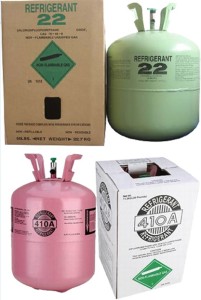 Prior to 1987, the usage of ozone-depleting chlorofluorocarbons (CFCs) was largely unmonitored. As people became more aware of the damaging effects of CFCs, they looked for ways of regulating its production and usage. The Vienna Convention for the protection of ozone layer brought about the Montreal Protocol which is an International Environmental Treaty regulating the usage and production of CFCs. The requirements of this protocol were later modified leading to a complete phase out of chlorofluorocarbons production in 1996. The countries most affected were developing nations.
Prior to 1987, the usage of ozone-depleting chlorofluorocarbons (CFCs) was largely unmonitored. As people became more aware of the damaging effects of CFCs, they looked for ways of regulating its production and usage. The Vienna Convention for the protection of ozone layer brought about the Montreal Protocol which is an International Environmental Treaty regulating the usage and production of CFCs. The requirements of this protocol were later modified leading to a complete phase out of chlorofluorocarbons production in 1996. The countries most affected were developing nations.
Together with CFCs, other substances known as hydrochlorofluorocarbons (HCFCs) are considered threat to the environment particularly the ozone layer. The destructive nature of CFCs is far much greater compared to that of HCFCs. The United States is particularly keen about the observance and implementation of the Montreal Protocol carried out through the Environment Protection Agency (EPA).
What is R-22?
For a number of decades now, residential heat pumps as well as air conditioning systems have been using the R-22 refrigerants to facilitate the cooling or heating of their homes. R-22 is a type of hydrochlorofluorocarbon which if leaked into the atmosphere, causes depletion of the ozone layer. R-22 is also a greenhouse gas which releases HFC-23 as a byproduct which in itself contributes immensely to global warming.
Phasing Out of R-22
When cooling systems start leaking, the chlorine contained in R-22 escapes into the atmosphere and depletes the environment. It is because of these damaging effects that is why it is being phased out. The United States government in conjunction with others around the globe has adopted an accelerated phase out program to rid the market of the R-22 refrigerants. In 2010, newly installed cooling systems were legally restricted from using the R-22 refrigerant. The projection is that by 2020, all R-22 refrigerants will have exited the market. Currently, R-22 is used on the existing systems.
The R-22 Replacement
Scientific studies conducted over a long period of time successfully led to the development of an alternative to the R-22 refrigerant. The new refrigerant which is fitted in new HVAC models is known as R410A.
Advantages of Using R410A Refrigerant
There are various merits that come with R410A refrigerant making it a worthwhile investment particularly in new systems. Some of these unique features include:
- Ozone Friendly – Unlike R-22, R410A is formulated using scientifically proven approaches which limit its toxicity. It contains fluorine which does not contribute to ozone layer depletion.
- Superior Heat Transfer – The ability of a refrigerant to allow for ease in heat transfer is one of the factors when choosing HVAC equipments. R410A optimizes heat transfer making cooling and heating much more efficient.
- Non-Flammable – The role played by a refrigerant in the cooling system makes it susceptible to fires. This is because it is a carrier of all the heat within the system. R410A is non-flammable and is unlikely to cause fires.
- Non Corrosive – Corrosive nature of refrigerants make them to wear down the coils through which the refrigerant is carried. This corrosion weakens your equipment therefore making it vulnerable to breakdowns. R410A does not corrode the system.
- Flexibility – Whether you put the R410A refrigerant in brass, copper or steel systems, it will function perfectly well. This shows how flexible the refrigerant is and the options it can give you.
The Way Forward
As a homeowner or business person, the value that R410A refrigerant brings to your premises is simply indispensible. You will save in monetary terms while still getting an excellent service from R410A. As the world becomes more sensitive to global warming and ozone depletion, R410A is the refrigerant of choice.

